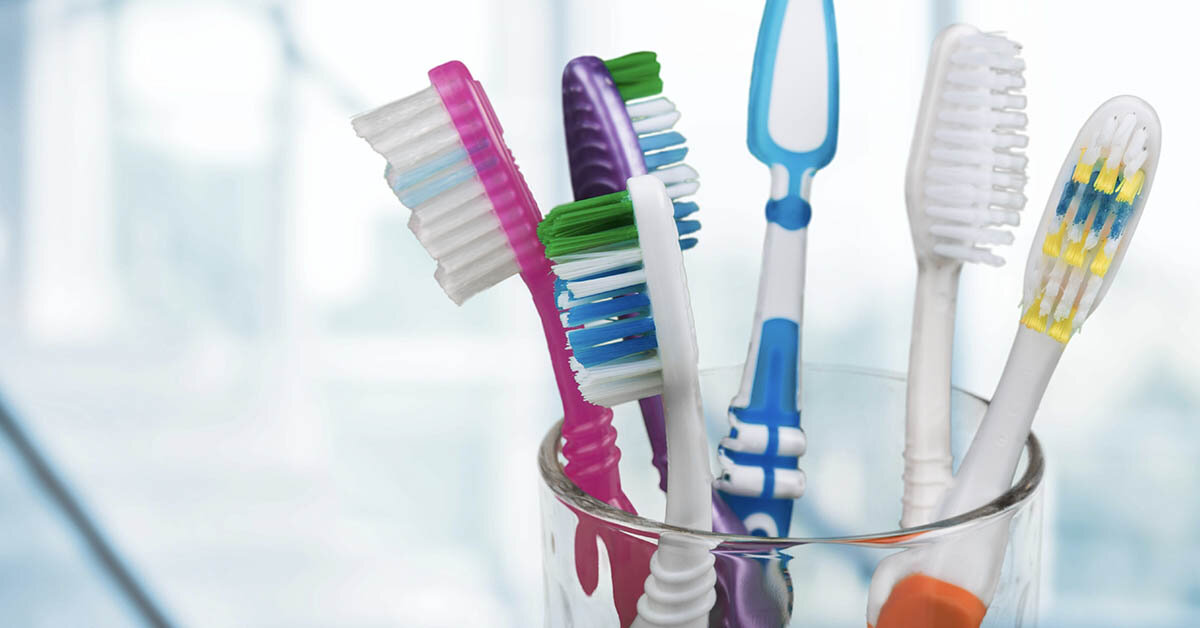When should I change my toothbrush?
Ask yourself the following questions: When should I change my toothbrush? Is it frayed? Have I been sick? When did I replace my toothbrush? How often do you replace your toothbrush?
If you’ve been using the same tool to brush your teeth for several months, it’s probably time for a switch. Swapping out your old toothbrush with a new one regularly can prevent you from getting sick and ensure that you’re getting the most out of your brushing sessions. But how frequently should you replace your toothbrush?
Replacing it will help keep you and your family healthy and smiling brightly. Here are some important rules and tips you should follow for maintaining optimal dental health.
When should you change your toothbrush?
The American Dental Association (ADA) recommends brushing your teeth for two minutes twice a day using a fluoride toothpaste with a toothbrush that has soft bristles. The ADA also recommends that you should change your toothbrush every three to four months.
If you are brushing twice a day, the bristles will get frayed and become less effective with removing plaque from teeth and gums. If you see wear on your toothbrush bristles, it’s time to replace it.
Should I replace my toothbrush after being sick?
Although it’s true that toothbrushes harbor germs, unless your immune system is severely compromised, you don’t have to worry about being reinfecting you with the same virus.
Many health professionals recommend not microwaving or putting toothbrushes in the dishwasher because the high heat may damage the brush. If you switch your toothbrush it may be a way to help you stay healthy.
What happens if I don’t switch often enough?
If you don’t replace it on a regular basis you run the risk of damaging your gums, as old toothbrushes become ineffective with removing plaque from your teeth, which leads to gingivitis.
Left untreated, gingivitis leads to infection, which can cause your teeth to fall out. Replacing their toothbrushes more often may make them take better care of their teeth.
Get a new toothbrush to help with your dental concerns
If your gums bleed because you have gingivitis, higher cavity rate, or you have bad breath and need to brush your tongue with a toothbrush with a tongue cleaner. Whatever the reason, the type of toothbrush you choose can make a positive difference in your oral health. If this is occurring, switch it immediately and schedule a deep cleaning with the dentist.
What to consider when buying dental products
Always care for your oral health by replacing your toothbrush at least every three to four months, after you’ve been sick, especially if your toothbrush looks worn or if you’re having dental issues. Toothbrushes come in a variety of shapes and sizes. Whether you are buying a manual or electric toothbrush, make sure to look for ones that are recognized by the American Dental Association (ADA).
A majority of dentists all agree that a soft-bristled brush that is gentle on the gums is best. You should also consider investing in an electric toothbrush that has been proven to improve oral health beyond what a manual toothbrush can do by removing plaque and eliminating staining of the teeth.
Toothbrushes are relatively inexpensive, and you should be purchasing at least one in between dental visits. You will get a free toothbrush every time you go to the dentist for a routine cleaning, but that usually happens only every six months. You’ll need to swap out your brush at least once in between.
If you need a dentist, schedule an exam or to ask us questions about your dental hygiene, visit our McKinney dentist today at Stonelodge Dental. Our team will work hard to make you feel cared for and at home from the first moment you enter our offices. Call or schedule your appointment today.

